CoolSculpting in Thailand
Search and Compare the Best Clinics and Doctors at the Lowest Prices for CoolSculpting in Thailand
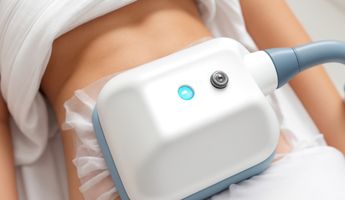
Find the best clinics for CoolSculpting in Thailand
With Medijump you can browse 43 facilities offering CoolSculpting procedures in Thailand. The cheapest price available is $111 in Bangkok. And for the cheapest price globally, prices start from $111 in Thailand.
CoolSculpting in Bangkok
Price: $ 111
CoolSculpting in Phuket
Price: $ 208
Thailand offers the best prices Worldwide
Price: $ 111
From 37 verified reviews
Grainne, 01 August 2024
very good service.
From 1 verified reviews
Li Wei, 12 March 2024
Couldn't be happier with my hair transplant results at He Clinic. My hairline looks natural, and the density is just right. I specifically asked for it to be slightly asymetrical so it wasnt too obvious ;)
From 30 verified reviews
Acne Journey, 05 February 2023
Professional cosmetic eyelid surgery and aesthetic clinic that you can trust.
From 10 verified reviews
Naida, 23 July 2024
Lyfe Medical Wellness made me feel comfortable and confident in managing my immune health. Fantastic consultation.
From 8 verified reviews
Mianns Chan, 20 July 2020
Im very satisfied with my Eyebag removal and Double eyelids stitching. Thank you very much to the professional Dr Hwong and nurse . So professional and kind! Thumbs up 👍
From 6 verified reviews
FFFaFiat, 30 January 2023
The hospital is very nice, clean and gorgeous. All staff is so kind and serve with smile. Ms.Yok,sales, took very good care of me. So impressive!
From 3 verified reviews
Shira, 22 August 2024
Good service.
From 3 verified reviews
j Showcase, 06 May 2022
Good place, good service, available, less people, not busy.
From 2 verified reviews
Calliope, 15 July 2024
The clinic is clean, and the Botox treatment was quick and painless.
From 2 verified reviews
Xandra, 18 June 2024
Amazing results! My acne has significantly reduced, and my skin feels smoother than ever. Highly recommend SLC Siam Laser Clinic.
From 2 verified reviews
Janice Mayer, 02 July 2024
The staff was really professional and caring, my experience was 10/10 from start to finish. Talking about the treatment, it doesn't hurt and there were no side effects at all.
From 2 verified reviews
Bautista, 01 August 2024
Healing Art Rehab transformed my life. The natural treatment methods were gentle yet incredibly effective. I feel more in control and at peace.
From 2 verified reviews
Riley, 14 February 2024
Pongsak Clinic Esplanade offers exceptional laser hair removal. Customers rave about the professional staff and effective treatments.
From 2 verified reviews
Genevieve, 21 July 2024
Expert practitioners at Pongsak Clinic Sriracha deliver precise, comfortable Botox injections for optimal results.
From 8 verified reviews
Svana, 20 August 2024
Excellent service and fabulous results. My forehead lines are gone, and I still look like myself. Highly recommend!
From 79 verified reviews
Thitirat Chen, 20 January 2023
I recently had Coolsculpting done at ProDerma and it was a great experience. The staff was friendly and knowledgeable and the facility was modern and clean. The procedure was quick and comfortable and I love the results! Highly recommend!
MEDIGLOW LASER & SKIN CLINIC, located in Pak Kret, Nonthaburi, Thailand offers patients CoolSculpting procedures among its total of 7 available procedures, across 4 different specialties. The cost of a CoolSculpting procedure starts from $275, whilst the national average price is approximately $333. There is currently a lack of information available on the specialists practicing at the Hospital, and they are not accredited by any recognized accreditations institutes
Patama Clinic, Pak Kret, located in Pak Kret, Nonthaburi, Thailand offers patients CoolSculpting procedures among its total of 11 available procedures, across 3 different specialties. The cost of a CoolSculpting procedure starts from $528, whilst the national average price is approximately $333. There is currently a lack of information available on the specialists practicing at the Clinic, and they are not accredited by any recognized accreditations institutes
The Prima Clinic, located in Si Racha, Pattaya, Thailand offers patients Fat Reduction procedures among its total of 13 available procedures, across 3 different specialties. The cost of a Fat Reduction procedure ranges from $139 to $275, whilst the national average price is approximately $149. All procedures and treatments are undertaken by just a small team of specialists, with 3 in total at the Clinic, and they are not accredited by any recognized accreditations institutes
Siam Clinic Phuket สยามคลินิก ภูเก็ต, located in Phuket Town, Phuket, Thailand offers patients CoolSculpting procedures among its total of 20 available procedures, across 3 different specialties. The cost of a CoolSculpting procedure ranges from $279 to $372, whilst the national average price is approximately $445. All procedures and treatments are undertaken by just a small team of specialists, with 2 in total at the Hospital, and they are not accredited by any recognized accreditations institutes
- Home
- Thailand
Compare Before & After Photos of _procedure_photos.phpCoolSculpting
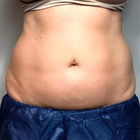
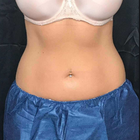
Front view
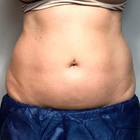
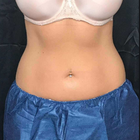
Front view
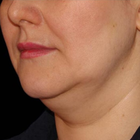
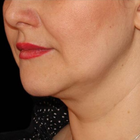
Half-side view
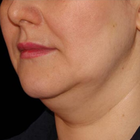
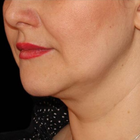
Half-side view
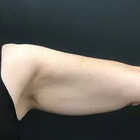
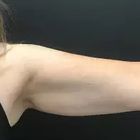
Front view
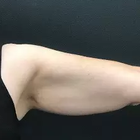
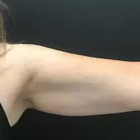
Front view
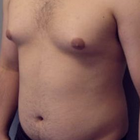
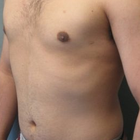
Half-side view
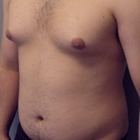
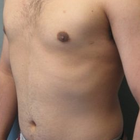
Half-side view
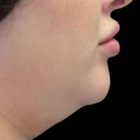
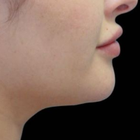
Full-side view

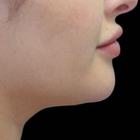
Full-side view
WHY US?
At Medijump, we're making medical easy. You can search, compare, discuss, and book your medical all in one place. We open the door to the best medical providers worldwide, saving you time and energy along the way, and it's all for FREE, no hidden fees, and no price markups guaranteed. So what are you waiting for?

Free

Best Price

Widest Selection

Risk-Free
What you need to know about CoolSculpting in Thailand

CoolSculpting, also known as cryolipolysis, is a popular non-surgical fat reduction procedure that uses a form of controlled cooling to remove stubborn fat deposits that have not responded to traditional diet and exercise. It is FDA-cleared for removing fat cells from the abdomen, flanks, and thighs without surgery or downtime. In Thailand, many patients opt for CoolSculpting because it allows them to resume their normal activities immediately after the procedure.
The CoolSculpting procedure essentially works by freezing unwanted fat cells, causing them to die and be naturally eliminated by the body over time. One of the notable things about the procedure is that it does not involve any cuts, anaesthesia, or significant downtime. Unlike liposuction, CoolSculpting is not a weight-loss solution, but rather a body contouring procedure, it's ideal for reducing small, localized fat bulges. So despite being a less invasive alternative, the procedure might not offer the extensive fat reduction that surgeries often deliver.
What is the cost of CoolSculpting in Thailand?
When calculating the cost for a CoolSculpting procedure in Thailand, remember that several aspects factor into the calculation. The final price is governed by specifics like the regions you wish to target, the number of treatment rounds you need, and the particular location. To give a ballpark figure, people often spend from "$500 through $4,000 per each treatment round". Please take note, these values serve as a guide, and the individual's specific goals and the treatment plan can alter the final cost.
Various clinics in Thailand do offer provisions for financing to lighten the burden. Periodically, they might also extend promotional campaigns to offer more affordability. Even with cost being a major factor to consider, it's equally important to count in the level of expertise of the practitioner performing the procedure, along with ensuring the safety and efficacy of the treatment.
For a more defined estimate of costs that covers your personal treatment plan, we encourage you to set up a direct consultation with a CoolSculpting professional.
What does a CoolSculpting Procedure Involve?
During a CoolSculpting process, a trained professional starts by marking the specific area on your body for treatment, followed by the application of a gel pad that acts as a protective layer between your skin and the cooling panel of the device. They then use a uniquely designed applicator, functioning much like a vacuum, to gently draw your skin into its cup. This can create a feeling akin to mild pinching, tugging, or pulling. On top of that, CoolSculpting does not involve any incision, stitches, or anaesthesia.
Next, the actual cooling mechanism activates, which can cause a numbing effect on the part of your body being treated. The principle guiding CoolSculpting revolves around the controlled cooling of fat cells beneath the skin, essentially freezing them off. It's significant to highlight that while the fat cells reach the freezing point and get altered, the skin, as well as other adjacent tissues, remain unaffected. This is due to fat cells having a higher freezing temperature.
As the procedure continues, patients can stay relaxed, read, handle emails or even take a brief nap. Typically, each area's session lasts anywhere between 35-60 minutes, and this time frame varies according to the treatment area size.
How Long Should I Stay in Thailand for a CoolSculpting Procedure?
Thanks to the non-invasive nature of CoolSculpting in Thailand, patients are normally free to resume their usual activities directly after treatment. Every CoolSculpting session generally ranges from 35 to 60 minutes, allowing you to effectively integrate it into your day, perhaps during a lunch break, and return to your routine immediately afterward. Therefore, if you're considering travelling to Thailand for the procedure, there's no need for an extended stay.
That said, depending on the number of treatment areas, your healthcare provider may suggest multiple sessions. If this is the case, you may consider a short stay of a few days in Thailand for convenience and easy access to your appointments. As with any medical procedure, it's beneficial to discuss these logistics with your chosen clinic or specialist ahead of time.
What's the Recovery Time for CoolSculpting Procedures in Thailand?
One of the unique attributes of CoolSculpting is that there's virtually no recovery time necessary. Unlike surgical procedures, CoolSculpting in Thailand is completely non-invasive, causing minimal discomfort during and after the treatment. Patients commonly return to work, hit the gym, or carry on with their regular activities right after their appointment.
However, it's normal to experience minor side effects such as redness, swelling, bruising, or sensitivity in the treated area. These symptoms are temporary and typically resolve within a few days or weeks. Always consult with your healthcare provider for a personalized post-treatment plan. Keep in mind that results from CoolSculpting aren't immediately discernible, final results are typically visible after two to three months.
What's the Success Rate of CoolSculpting Procedures in Thailand?
With a high satisfaction rate of 82%, CoolSculpting is making a positive impact in the world of non-surgical fat reduction. Isn't it impressive when people have such great experiences that they recommend it to their pals? That's the power of CoolSculpting! Research shows us that just one CoolSculpting session can knock off between 20% to 80% of fat in the treated area. While some individuals hit their body goals at one go, others might need a couple of rounds to knock out that stubborn fat. Keep in mind, however, the fruits of your CoolSculpting session take a bit of time to show - think of it like planting a seed and watching it grow. You'll start noticing changes from the fourth week, and by two months, you'll see the most striking results.
Of course, while CoolSculpting is usually safe, it's only fair to let you know about potential side effects, even though they're pretty rare. We're talking temporary aches, cramps, stinging, bruising, some skin redness, itching, and even a bit of a tingly feeling. In rarer cases, you could see an increase in fat cells, a condition known as paradoxical adipose hyperplasia.
Ultimately, we're all unique, and how our bodies respond to treatments like CoolSculpting can also be different. If you're considering CoolSculpting, having a chat with a certified provider can work wonders. They can give you the lowdown on the process, set your expectations right, and see how the treatment can help you meet your body goals.
Are there Alternatives to CoolSculpting Procedures in Thailand?
Indeed, if you're contemplating non-surgical or surgical body contouring methods in Thailand, you have options other than CoolSculpting. Bear in mind, that every person is unique, and alternatives should be considered based on your specific concerns, health condition and personal goals.
Among the non-surgical alternatives to CoolSculpting are:
- SculpSure: This treatment uses controlled laser technology to destroy fat cells by heating them.
- UltraShape: This method employs ultrasound technology for body contouring, reducing unwanted fat cells.
As for surgical alternatives, consider:
- Liposuction: A surgical procedure that removes fat deposits directly.
- Abdominoplasty (Tummy Tuck): This process primarily removes excess skin and fat from the abdomen and tightens the abdominal muscles.
Each of these options presents its own set of benefits and potential drawbacks. For instance, while surgical methods like liposuction and abdominoplasty often deliver more substantial results, they are more invasive and come with extended recovery periods and potential risks.
It's advisable to consult with a trusted healthcare professional to discuss these alternatives alongside CoolSculpting. Together, you can decide which option best aligns with your individual expectations and needs.
What Should You Expect Before and After the CoolSculpting Procedure?
Before the CoolSculpting procedure, your healthcare provider in Thailand will conduct a thorough consultation during which they'll review your medical history and perform a physical examination. Additionally, they'll use this time to discuss your expectations, explain the process, and create a tailor-made treatment plan. On the day of the procedure, the applicator delivers precisely controlled cooling to the targeted fat cells. Patients may feel an initial sucking sensation followed by cooling, but many people read, work on laptops or even nap during the session. After the applicator is detached, the provider will briefly massage the area to break up the treated fat cells and enhance fat reduction. Post-procedure, the treated area may seem somewhat reddened, tender, swollen, or bruised, but these are temporary and expected. These side effects should subside within a few weeks. You can usually resume regular activities immediately without any recovery period.
What sort of Aftercare is Required for CoolSculpting Procedures in Thailand?
Post-treatment care for CoolSculpting procedures in Thailand is typically uncomplicated, mirroring a significant perk of the treatment – a zero downtime recovery. This feature allows patients to promptly return to their regular routines. However, like every medical procedure, patients could experience short-lived side effects, such as slight redness, mild swelling, some bruising or increased sensitivity in the treated area. But these are mostly temporary and recede within a few weeks. Keep in mind that individual reactions can vary and everyone's body may respond differently after treatment.
In addition to dealing with any minor side effects, aftercare emphasizes the critical role of a balanced lifestyle. Upholding a healthy diet along with regular exercise is not just vital for enhancing and sustaining the CoolSculpting results, but it also bolsters overall well-being. Remember, although CoolSculpting permanently eradicates certain fat cells, it does not prevent possible weight gain leading to expansion of the existing fat cells. Scheduled follow-up visits with your healthcare provider forms a key part of the journey, aiding in monitoring progress and ensuring proper healing. In essence, a commitment to healthy living is the cornerstone of optimal aftercare following CoolSculpting procedures in Thailand.
Is the CoolSculpting procedure safe?
Absolutely, CoolSculpting by and large enjoys a reputation as a safe treatment modality. It has received the thumbs up from the FDA in the United States for its effectiveness in reducing fat in designated areas of the body. Being a non-invasive procedure, it brings down the chances of complications and risks quite significantly when contrasted with other intrusive fat-reduction methods such as liposuction.
Regardless, it's prudent to remember that even the safest of procedures could cause mild side effects. With CoolSculpting, you might experience gentle redness, sensitivity, swelling or even bruises in the area of treatment. Such occurrences are typically short-lived, receding within a few weeks.
Before the initiation of any therapeutic intervention, including CoolSculpting, it's of utmost importance to hold comprehensive discussions with your healthcare provider about any concerns or risks to make a fully informed decision.
CoolSculpting v's Liposuction
Liposuction, although highly effective, is an invasive procedure that requires small incisions for the introduction of a cannula, a thin tube used to dislodge and suction fat. Due to its surgical nature, it unavoidably leaves behind minimal scarring, though the size of these scars is typically tiny and often inconspicuous. Moreover, the procedure necessitates some form of anaesthesia, either local or general. This contributes to an extended recovery period in the subsequent weeks, during which patients may experience discomfort and temporary restrictions in physical activities.
Conversely, CoolSculpting offers a unique advantage as a non-invasive treatment. It does its work quietly in the background, destroying fat cells which are gradually expelled by the body naturally over time, resulting in nearly instantaneous recovery. Patients can return to their routine activities immediately after each treatment. However, pricing for CoolSculpting is typically per site treated, and depending on the amount of fat, an individual may need 1-3 sessions per site, which can add up. Therefore, when there are multiple areas of concern, liposuction could potentially be a more economical choice.
Remember, it's just as essential to consider the safety, effectiveness and long-term benefits of both options as it is to consider cost and recovery time factors. Always consult a healthcare provider to discuss your specific goals and find the most suitable treatment method for you.
Whilst the information presented here has been accurately sourced and verified by a medical professional for its accuracy, it is still advised to consult with your doctor before pursuing a medical treatment at one of the listed medical providers
No Time?
Tell us what you're looking for and we'll reachout to the top clinics all at once
Enquire Now

Popular Procedures in Thailand
Prices Start From $120

Prices Start From $931

Prices Start From $76

Prices Start From $236

Recommended Medical Centers in Thailand for CoolSculpting

- Interpreter services
- Translation service
- Religious facilities
- Medical records transfer
- Medical travel insurance
- Health insurance coordination
- TV in the room
- Safe in the room
- Phone in the room
- Private rooms for patients available

- Interpreter services
- Translation service
- Religious facilities
- Medical records transfer
- Medical travel insurance
- Health insurance coordination
- TV in the room
- Safe in the room
- Phone in the room
- Private rooms for patients available

- Interpreter services
- Translation service
- Religious facilities
- Medical records transfer
- Medical travel insurance
- Health insurance coordination
- TV in the room
- Safe in the room
- Phone in the room
- Private rooms for patients available

- Interpreter services
- Translation service
- Religious facilities
- Medical records transfer
- Medical travel insurance
- Health insurance coordination
- TV in the room
- Safe in the room
- Phone in the room
- Private rooms for patients available

- Interpreter services
- Translation service
- Religious facilities
- Medical records transfer
- Medical travel insurance
- Health insurance coordination
- TV in the room
- Safe in the room
- Phone in the room
- Private rooms for patients available

- Interpreter services
- Translation service
- Religious facilities
- Medical records transfer
- Medical travel insurance
- Health insurance coordination
- TV in the room
- Safe in the room
- Phone in the room
- Private rooms for patients available

- Interpreter services
- Translation service
- Religious facilities
- Medical records transfer
- Medical travel insurance
- Health insurance coordination
- TV in the room
- Safe in the room
- Phone in the room
- Private rooms for patients available

- Interpreter services
- Translation service
- Religious facilities
- Medical records transfer
- Medical travel insurance
- Health insurance coordination
- TV in the room
- Safe in the room
- Phone in the room
- Private rooms for patients available

- Interpreter services
- Translation service
- Religious facilities
- Medical records transfer
- Medical travel insurance
- Health insurance coordination
- TV in the room
- Safe in the room
- Phone in the room
- Private rooms for patients available

- Interpreter services
- Translation service
- Religious facilities
- Medical records transfer
- Medical travel insurance
- Health insurance coordination
- TV in the room
- Safe in the room
- Phone in the room
- Private rooms for patients available
CoolSculpting in and around Thailand
About Thailand
Thailand is consistently voted one of the most popular travel destinations in the world, leading the way for Asian countries with over 60 state-of-the-art JCI-accredited facilities. The country is renowned for its tropical beaches, floating markets, stunning royal palaces, and Buddhist temples. The vibrant capital, Bangkok, blends tradition and modernity with its ultramodern cityscape featuring brand-new high-rise condominiums side-by-side with quiet, serene canalside communities. As per the Tourism Authority of Thailand, Phuket, Koh Samui, Chiang Mai, Hua Hin, and Pattaya are the most sought-after tourist spots outside Bangkok, each boasting excellent yacht chartering opportunities.
Each year, Thailand opens its doors to hundreds of thousands of medical tourists. These individuals traverse the globe to receive treatment, with a significant number hailing from the local SE Asia region, Australia, the United States, and the Middle East. Recently, there has been an upsurge in the number of visitors coming in from China for medical purposes.
The reasons for Thailand's popularity as a medical tourism destination are its outstanding private healthcare system, attractive tropical climate, and competitive pricing. In the list of top medical tourism destinations worldwide, Thailand currently holds the third position. The procedures that attract most patients are cosmetic surgeries, including breast augmentations, gender reassignment surgery, and CoolSculpting, along with cardiac surgery, orthopedics, and urology.
Popular Parts of Thailand
Thailand, with a population of just under 70 million people spread over an area of around 500,000 square kilometers, has several regions and cities that are widely popular with both natives and tourists. Offering a diverse blend of urban and rural experiences, beach life and inland natural beauty, each part of Thailand offers a unique angle into the rich and complex Thai culture.
Arguably the most popular area of Thailand is the capital city, Bangkok. Consistently ranked as one of the most visited cities in the world, Bangkok is an ever-buzzing urban hub with its busy streets, modern lifestyle, magnificent temples and opulent palace, alongside a pulsating nightlife. This city is typically the entry gateway for a vast majority of the 30 million tourists who visit Thailand each year. Known for its glimmering cityscape and vibrant food scene, Bangkok is indeed a compulsory stop in every traveler's itinerary.
While Bangkok is the country's urban heart, there's more to Thailand than just its capital. Among the other popular regions are the beachside island paradise of Phuket and Koh Samui, the city of Pattaya, and Hua Hin - each of them a haven for beach lovers and anyone seeking a laid-back vibe away from bustling city life. However, for those who prefer the call of the inland and a dash of adventure, Chiang Mai, nestled in the lush jungles of northern Thailand offers a refreshing and unique proposition with its derivative local culture, serene temples and interaction with native wildlife.
Weather and Climate in Thailand
Known for its truly tropical climate and scorching temperatures, Thailand, in general, is hot and humid all year round. The coastal locations do benefit from the cooling sea breeze, a luxury urban Bangkok is denied. Average temperatures range from 28°C (82°F) up to 35°C (95°F). However, during the Hot Season (March to June), temperatures can top 40°C (104°F).
The infamous Rainy Season tends to start in July and continue through to October; during this time expect heavy rainfall, often amounting to flooding in some areas. It will remain warm to hot but humidity levels will rise and the mosquitos will come out to play!
November to February is often referred to as the Cool Season when less rain is expected and the temperatures tend not to rise above 35°C (95°F).
From a tourist perspective; the High Season lasts from November to March and the Low Season from April to October. But be aware of the Shoulder Seasons of April to June and September to October, when Thailand is less impacted by the Rainy Season and less busy with tourists – these can be the ideal times to visit.
In a nutshell, Thailand is a Shorts and T-shirt Country, you’re never really going to be cold, so pack light; shorts, t-shirts, vests, skirts, singlets, and light dresses. Maybe pack jeans and shoes if you’re planning on going to a swanky roof-top bar in Bangkok or to a temple where flip-flops are not acceptable.
Don’t forget mosquito spray as the little pests can get everywhere; big ones and little ones! Always protect against the sun; with high factor sunscreen and UV-protective sunglasses. The usual medications found at home should be available in most pharmacies.
Getting around in Thailand
With the Suvarnabhumi International Airport being serviced by some of the world’s major airlines, tourists can fly into Thailand from almost anywhere in the world, sometimes with a connection along the way. All the popular regions have their own international airports, with the exception of Pattaya, which is just a 90-minute taxi ride from Bangkok. However, arrival destinations are slightly limited outside of Bangkok, but the likes of Emirates and Qatar Airways will fly into Phuket International Airport. The rest, mostly fly in from local countries on budget airlines, including Scoot, SilkAir, AirAsia, and Lion Air to name a few.
For domestic flights, the airports are nicely linked in Thailand with flights from as little as $45 USD one way. There are several budget airlines servicing these routes, including Thai Lion Air, AirAsia, Nok Air, Thai Airways, Bangkok Airways, and Thai Smile.
The train allows for even cheaper travel within Thailand and is far more comfortable than spending hours sitting on a bus. Bangkok has the BTS, or Skytrain, which allows for fast transfer from the airport into the city. Given the traffic in central Bangkok, the BTS offers a great alternative to being stuck in traffic jams.
Taxis are great, however, be sure to confirm the price before you begin your journey or better still, insist the ride goes on the meter – that is how you guarantee the cheapest and fairest price. But expect traffic in the city and any built-up areas.
Tourist Visas in Thailand
Before you travel to Thailand, it is important to stay updated with the latest visa requirements. While a number of countries are eligible for visa-free entry, the rules can sometimes shift, making it essential to verify before you travel.
If you are travelling from countries like the United Kingdom, the United States, Germany, Australia, Singapore, Canada, France, Italy, Japan, New Zealand, and South Korea can enjoy a stay of up to 30 days in Thailand without needing a visa. On the other hand, if you are visiting from China, India, Myanmar, Laos, Cambodia, Bhutan, Nepal, Bangladesh, Sri Lanka, Pakistan, and Uzbekistan, you will be granted the facility of a visa on arrival.
To get a visa on arrival here are the requirements:
1. You need to have a valid passport with at least 6 months of remaining validity.
2: You would need to show proof of a round-trip ticket within 30 days and confirmation of your accommodation for the first night in Thailand.
3. You need to demonstrate that you have sufficient funds for your visit, which is 10,000 THB per person or 20,000 THB per family.
Don't forget to carry a recent passport-sized photograph. The fee for a visa on arrival is 2,000 THB, and you can pay it via cash or credit card.
For more information, click here.
Additional Information
- The Thai Baht (THB) is the local currency. 1 USD is approximately around 34.5559 on average as of 2023.
- ATMs are readily available across Thailand and accept virtually all major bank cards (Visa, Mastercard). Credit card payment is accepted in most established restaurants and outlets, with the more local food vendors, for example, only accepting cash.
- Thai is the local language but due to the extremely well-established tourism industry in Thailand, English is spoken by most locals who work with tourists, and often signs will have an English translation.
- Buddhism is the primary religion in Thailand, with a large Muslim population in the south. The Royal Family is deeply revered throughout the country and should never be disrespected.
- There are many public holidays in Thailand, which aren’t always on the same day each year, including Songkran (Thai New Year), which is celebrated in mid-April, Labor Day, and Coronation Day in early May, Asanha Buja in July and Constitution Day in December.
Popular Searches
- Plastic Surgery in Thailand
- Dental Implants in Thailand
- Hair Transplant in Thailand
- Breast Augmentation Thailand
- Gastric Sleeve in Thailand
- Gender Reassignment Surgery in Thailand
- Laser Hair Removal in Bangkok
- Botox in Bangkok
- Dermatology in Bangkok
- Breast Augmentation in Bangkok
- Coolsculpting in Bangkok
- Veneers in Turkey
- Hair Transplant in Turkey
- Rhinoplasty in Turkey
- Stem Cell Therapy in Mexico
- Rhinoplasty in Mexico
- Liposuction in Mexico
- Coolsculpting in Tijuana
- Rhinoplasty in Korea
- Scar Removal in Korea
- Gastric Sleeve in Turkey
- Bone Marrow Transplant in India
- Invisalign in Malaysia
- Plastic Surgery in the Dominican Republic
- Tummy Tuck in the Dominican Republic
- Plastic and Cosmetic Surgery in Poland
- Rhinoplasty in Poland
- Hair Implant in Poland
- Dental Implants in Poland
- IVF in Turkey



















